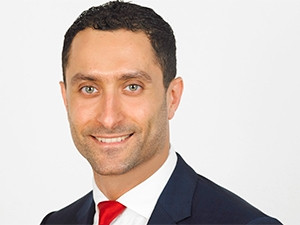
Policy and procedure need to be the central focus of digital education solutions, with technology being merely a means to an end, said Usama Nouri, senior strategic consultant at Avaya, in an interview at the Avaya Technology Forum in Dubai on Wednesday.
At present, too many digital education solutions around the world drive technology as an end in itself, and this is usually both ineffective and unsuccessful, Nouri explained.
This problem is compounded by the traditional industry divide between teachers and IT technicians, he continued. Many digital education solutions are the awkward joint effort of teachers who are not tech experts and IT technicians with no teaching experience, who struggle to converge their knowledge into a solution that is both educationally effective and technologically efficient, Nouri elaborated.
A strong potential solution to this dilemma is for government education departments to construct a centralised, cloud-based digital education platform, and lease it to schools, Nouri put forward.
Drawing on the commonly-discussed pros of software-as-a-service, he suggested this arrangement could allow schools to benefit from a level of technological proficiency they would ordinarily struggle to implement and maintain individually due to resource constraints, and "tremendously decrease [technology] costs" for schools.
Ease of use
Yet to be successful on a national level, this kind of solution would need to be stable enough not to need highly qualified engineers to maintain, Nouri cautioned.
It would also need to be hardware independent, so no user is limited by their device, he added.
Furthermore, it would need to be intuitive enough - for both older teachers and very young learners - for continuous use to occur naturally, he continued. Wasting lesson time grappling with technology is obviously counterproductive to education, he commented.
Analytics
The correct implementation of simple data collection and analytics can be integral to ensuring a digital classroom solution makes its way into continuous use, instead of quickly falling by the wayside, said Nouri.
Uncomplicated statistics, such as what percentage of teachers and learners have a particular piece of software installed or are registered with a specific resource, and how many of them use it regularly, can be a key indicator of the success of any individual solution, he offered.
These percentages can also serve as KPIs which should increase over time, forming a road map from partial to full adoption of a given technology.
Furthermore, if state education departments analyse these figures in combination with academic statistics such as pass rates, they can assess the returns of individual solutions, he noted.
Beyond cyber security
Security for schools was a recurring topic throughout the forum, as many drew attention to the various types of risks faced by schools; particularly physical threats.
Touching on the plight of school shootings in the US, Jean Turgeon, VP and chief technologist for software-define architecture at Avaya, suggested smart surveillance systems be used to identify intruders or weapons, and integrate with smart communication and Internet of things systems to enable an instant school lockdown if need be.
These surveillance systems, or triangulation systems that track learners based on where their devices are, could also be used to alert teachers when learners enter potentially dangerous areas on or around school property, added Ravi Subbarao, director of networking product management at Avaya.
Responding to comments about device theft in South African schools, Nouri acknowledged the problem is not unique to SA, but is common across the continent. The Department of Education could combat this issue by embedding a software-enabled identification profile in the hardware of each device, indicating which learner owns it and enabling it to be monitored and recovered in cases of loss or theft, Nouri recommended.
School cyber and physical security solutions are imperative not only for the safety of the students but for the sustainability of the school, Subbarao implied, noting that without sufficient security, schools could lose their students as easily as an unsecure hotel or venue would lose its guests.
Share